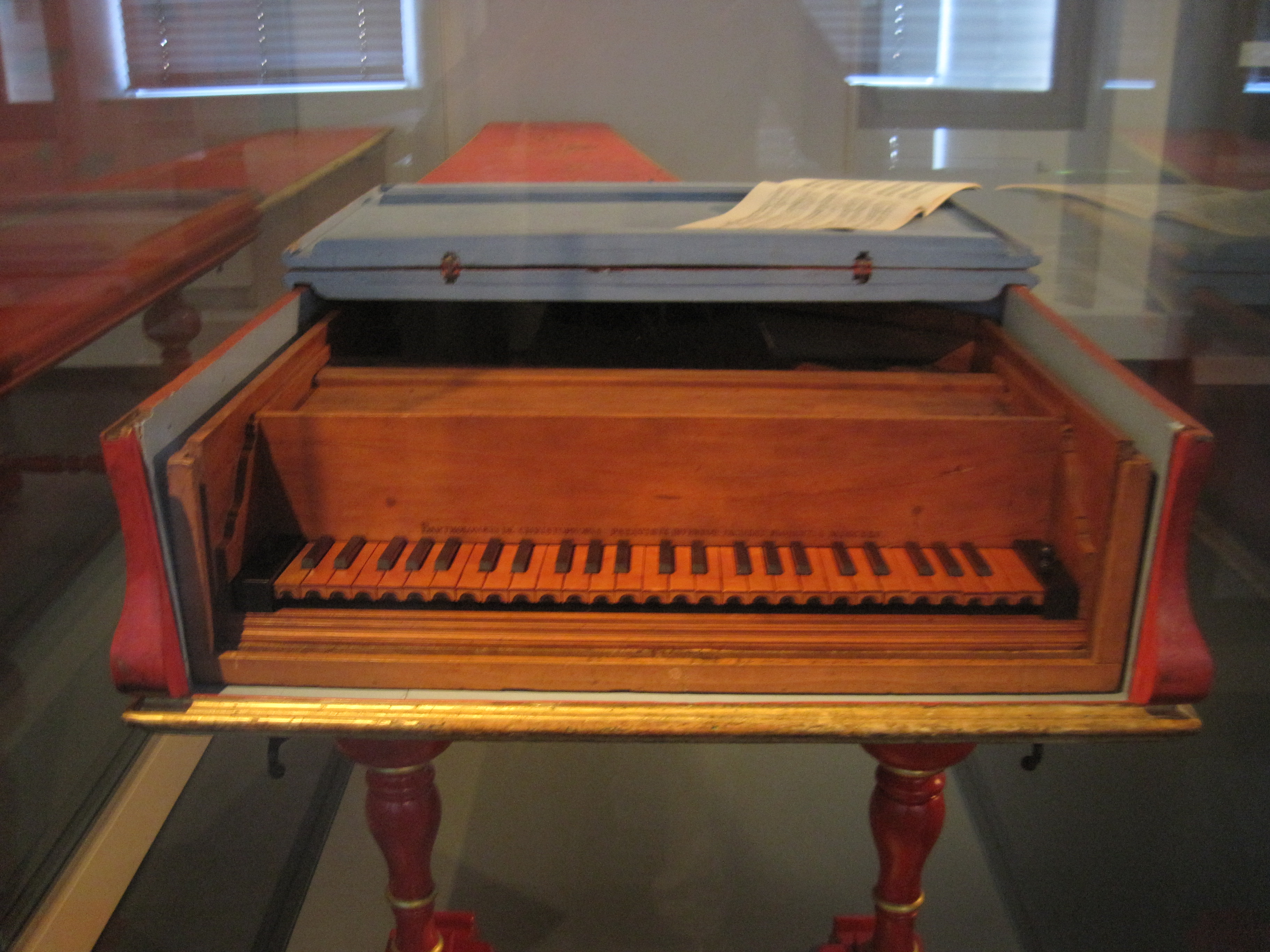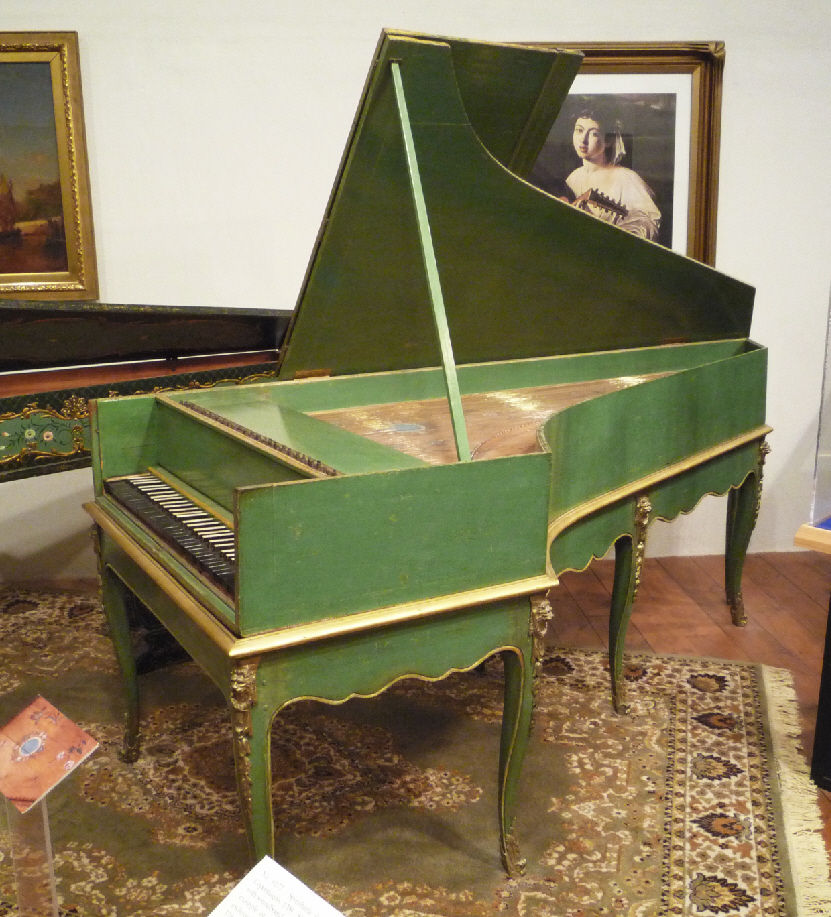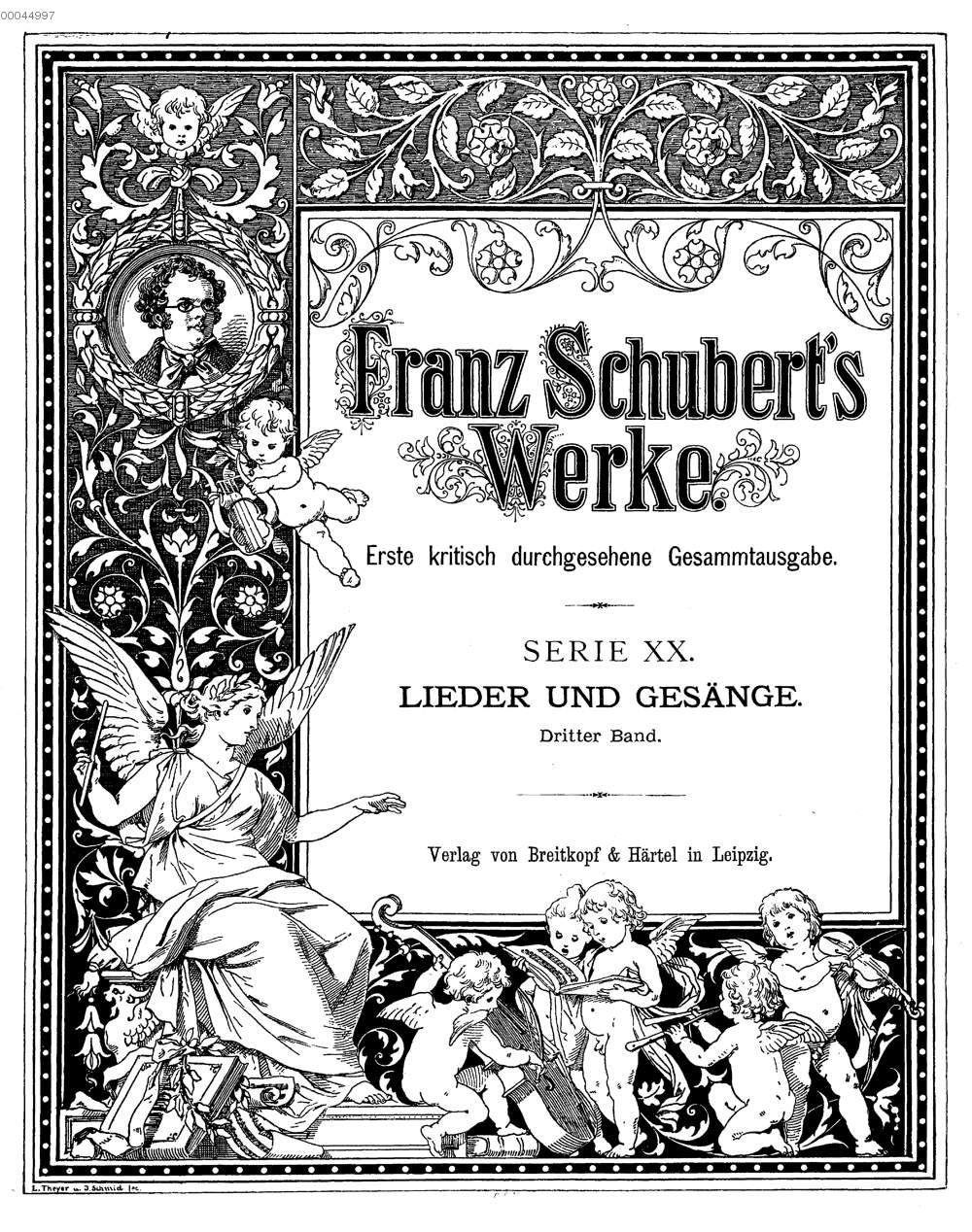|
Piano Sonata In B Major, D. 575 (Schubert)
The Piano Sonata in B major 575 by Franz Schubert is a sonata for solo piano, posthumously published as Op. 147 and given a dedication to Sigismond Thalberg by its publishers. Schubert composed the sonata in August 1817. Movements I. Allegro ma non troppo (B major) Uses a four-key exposition (B major, G major, E major, F-sharp major). II. Andante (E major) III. Scherzo: Allegretto – Trio (G major G major (or the key of G) is a major scale based on G, with the pitches G, A, B, C, D, E, and F. Its key signature has one sharp. Its relative minor is E minor and its parallel minor is G minor. The G major scale is: Notable compositi ..., D major) IV. Allegro giusto (B major) The work takes approximately 24 minutes to perform. Daniel Coren has noted that the first movement of this sonata is the only such movement in Schubert's sonatas where the recapitulation is an exact transposition of the exposition. Notes References * Tirimo, Martino. ''Schubert: The Compl ... [...More Info...] [...Related Items...] OR: [Wikipedia] [Google] [Baidu] |
Franz Schubert
Franz Peter Schubert (; 31 January 179719 November 1828) was an Austrian composer of the late Classical and early Romantic eras. Despite his short lifetime, Schubert left behind a vast ''oeuvre'', including more than 600 secular vocal works (mainly lieder), seven complete symphonies, sacred music, opera Opera is a form of theatre in which music is a fundamental component and dramatic roles are taken by singers. Such a "work" (the literal translation of the Italian word "opera") is typically a collaboration between a composer and a libr ...s, incidental music, and a large body of piano and chamber music. His major works include "Erlkönig (Schubert), Erlkönig" (D. 328), the Trout Quintet, Piano Quintet in A major, D. 667 (''Trout Quintet''), the Symphony No. 8 (Schubert), Symphony No. 8 in B minor, D. 759 (''Unfinished Symphony''), the Symphony No. 9 (Schubert), "Great" Symphony No. 9 in C major, D. 944, the String Quintet (Schubert), String Quintet (D. 956), ... [...More Info...] [...Related Items...] OR: [Wikipedia] [Google] [Baidu] |
Piano Sonata In E Minor, D
The piano is a stringed keyboard instrument in which the strings are struck by wooden hammers that are coated with a softer material (modern hammers are covered with dense wool felt; some early pianos used leather). It is played using a keyboard, which is a row of keys (small levers) that the performer presses down or strikes with the fingers and thumbs of both hands to cause the hammers to strike the strings. It was invented in Italy by Bartolomeo Cristofori around the year 1700. Description The word "piano" is a shortened form of ''pianoforte'', the Italian term for the early 1700s versions of the instrument, which in turn derives from ''clavicembalo col piano e forte'' (key cimbalom with quiet and loud)Pollens (1995, 238) and ''fortepiano''. The Italian musical terms ''piano'' and ''forte'' indicate "soft" and "loud" respectively, in this context referring to the variations in volume (i.e., loudness) produced in response to a pianist's touch or pressure on the keys: the gr ... [...More Info...] [...Related Items...] OR: [Wikipedia] [Google] [Baidu] |
Piano Sonatas By Franz Schubert
The piano is a stringed keyboard instrument in which the strings are struck by wooden hammers that are coated with a softer material (modern hammers are covered with dense wool felt; some early pianos used leather). It is played using a keyboard, which is a row of keys (small levers) that the performer presses down or strikes with the fingers and thumbs of both hands to cause the hammers to strike the strings. It was invented in Italy by Bartolomeo Cristofori around the year 1700. Description The word "piano" is a shortened form of ''pianoforte'', the Italian term for the early 1700s versions of the instrument, which in turn derives from ''clavicembalo col piano e forte'' (key cimbalom with quiet and loud)Pollens (1995, 238) and ''fortepiano''. The Italian musical terms ''piano'' and ''forte'' indicate "soft" and "loud" respectively, in this context referring to the variations in volume (i.e., loudness) produced in response to a pianist's touch or pressure on the keys: the grea ... [...More Info...] [...Related Items...] OR: [Wikipedia] [Google] [Baidu] |
1817 Compositions
Events January–March * January 1 – Sailing through the Sandwich Islands, Otto von Kotzebue discovers New Year Island. * January 19 – An army of 5,423 soldiers, led by General José de San Martín, starts crossing the Andes from Argentina, to liberate Chile and then Peru. * January 20 – Ram Mohan Roy and David Hare found Hindu College, Calcutta, offering instructions in Western languages and subjects. * February 12 – Battle of Chacabuco: The Argentine–Chilean patriotic army defeats the Spanish. * March 3 ** President James Madison vetoes John C. Calhoun's Bonus Bill. ** The U.S. Congress passes a law to split the Mississippi Territory, after Mississippi drafts a constitution, creating the Alabama Territory, effective in August. * March 4 – James Monroe is sworn in as the fifth President of the United States. * March 21 – The flag of the Pernambucan Revolt is publicly blessed by the dean of Recife Cathedral, Brazil. ... [...More Info...] [...Related Items...] OR: [Wikipedia] [Google] [Baidu] |
Piano Sonata In C Major, D
The piano is a stringed keyboard instrument in which the strings are struck by wooden hammers that are coated with a softer material (modern hammers are covered with dense wool felt; some early pianos used leather). It is played using a keyboard, which is a row of keys (small levers) that the performer presses down or strikes with the fingers and thumbs of both hands to cause the hammers to strike the strings. It was invented in Italy by Bartolomeo Cristofori around the year 1700. Description The word "piano" is a shortened form of ''pianoforte'', the Italian term for the early 1700s versions of the instrument, which in turn derives from ''clavicembalo col piano e forte'' (key cimbalom with quiet and loud)Pollens (1995, 238) and ''fortepiano''. The Italian musical terms ''piano'' and ''forte'' indicate "soft" and "loud" respectively, in this context referring to the variations in volume (i.e., loudness) produced in response to a pianist's touch or pressure on the keys: the gr ... [...More Info...] [...Related Items...] OR: [Wikipedia] [Google] [Baidu] |
List Of Solo Piano Compositions By Franz Schubert
The following is a list of the complete output of solo piano works composed by Franz Schubert. Quick reference ''Legend to the table:''✍indicates a direct link to the manuscript at the Schubert-''Autographs'' website by the Austrian Academy of Sciences ♫ indicates a direct link to the score at International Music Score Library Project (IMSLP) For the Piano Sonatas: there is no uniform numbering of the sonatas. The Deutsch catalogue does not number the sonatas. In the Neue Schubert-Ausgabe the sonatas are also not numbered. There are several issues which make the numbering difficult: e.g. which of the incomplete sketches are to be included?... in what order are they to be presented?... The current list retains the following numbering systems: *numbering of the piano sonatas according to Franz Schubert's Werke: Kritisch durchgesehene Gesammtausgabe – ''Serie 10: Sonaten für Pianoforte''. Leipzig: Breitkopf & Härtel, 1888. 15 sonatas — numbering of the piano sonata ... [...More Info...] [...Related Items...] OR: [Wikipedia] [Google] [Baidu] |
Piano Sonata In F-sharp Minor, D
The piano is a stringed keyboard instrument in which the strings are struck by wooden hammers that are coated with a softer material (modern hammers are covered with dense wool felt; some early pianos used leather). It is played using a musical keyboard, keyboard, which is a row of keys (small levers) that the performer presses down or strikes with the fingers and thumbs of both hands to cause the hammers to strike the strings. It was invented in Italy by Bartolomeo Cristofori around the year 1700. Description The word "piano" is a shortened form of ''pianoforte'', the Italian term for the early 1700s versions of the instrument, which in turn derives from ''clavicembalo col piano e forte'' (key cimbalom with quiet and loud)Pollens (1995, 238) and ''fortepiano''. The Italian musical terms ''piano'' and ''forte'' indicate "soft" and "loud" respectively, in this context referring to the variations in volume (i.e., loudness) produced in response to a pianist's touch or pressure on ... [...More Info...] [...Related Items...] OR: [Wikipedia] [Google] [Baidu] |
Piano Sonata In A Minor, D
The piano is a stringed keyboard instrument in which the strings are struck by wooden hammers that are coated with a softer material (modern hammers are covered with dense wool felt; some early pianos used leather). It is played using a keyboard, which is a row of keys (small levers) that the performer presses down or strikes with the fingers and thumbs of both hands to cause the hammers to strike the strings. It was invented in Italy by Bartolomeo Cristofori around the year 1700. Description The word "piano" is a shortened form of ''pianoforte'', the Italian term for the early 1700s versions of the instrument, which in turn derives from ''clavicembalo col piano e forte'' (key cimbalom with quiet and loud)Pollens (1995, 238) and ''fortepiano''. The Italian musical terms ''piano'' and ''forte'' indicate "soft" and "loud" respectively, in this context referring to the variations in volume (i.e., loudness) produced in response to a pianist's touch or pressure on the keys: the gr ... [...More Info...] [...Related Items...] OR: [Wikipedia] [Google] [Baidu] |
Franz Schubert's Works
Franz Schubert's Works: Complete and Authoritative Edition (german: Franz Schubert's Werke: Kritisch durchgesehene Gesammtausgabe), also known as the Collected Edition, is a late 19th-century publication of Franz Schubert's compositions.Deutsch 1951, p. xiii The publication is also known as the Alte Gesamt-Ausgabe ("the former complete edition"), abbreviated as AGA, for instance in the 1978 edition of the Deutsch catalogue, in order to distinguish it from the New Schubert Edition. Publication The twenty-two series (some in several volumes) were published from 1884 to 1897 by Breitkopf & Härtel. Eusebius Mandyczewski was one of the main editors. From 1965 Dover Publications started to reprint this edition, and later it was made available at the IMSLP website. Content I. Symphonien (Nos. 1-8) Editor: Johannes Brahms. Issued 1884. Two volumes (Symphonies 1–3; Symphonies 4–6/8–9). Reprinted: Dover Publications, 1978. II. Overtüren und Andere Orchesterwerke Editor: Johann ... [...More Info...] [...Related Items...] OR: [Wikipedia] [Google] [Baidu] |
List Of Compositions By Franz Schubert By Genre
Franz Schubert (31 January 1797 – 19 November 1828) was an extremely prolific Austrian composer. He composed some 1500 works (or, when collections, cycles and variants are grouped, some thousand compositions). The largest group are the lieder for piano and solo voice (over six hundred), and nearly as many piano pieces. Schubert also composed some 150 part songs, some 40 liturgical compositions (including several masses) and around 20 stage works like operas and incidental music. His orchestral output includes thirteen symphonies (seven completed) and several overtures. Schubert's chamber music includes over 20 string quartets, and several quintets, trios and duos. This article constitutes a complete list of Schubert's known works organized by their genre. The complete output is divided in eight series, and in principle follows the order established by the Neue Schubert-Ausgabe printed edition. The works found in each series are ordered ascendingly according to Deutsch numbers ... [...More Info...] [...Related Items...] OR: [Wikipedia] [Google] [Baidu] |
Opus Number
In musicology, the opus number is the "work number" that is assigned to a musical composition, or to a set of compositions, to indicate the chronological order of the composer's production. Opus numbers are used to distinguish among compositions with similar titles; the word is abbreviated as "Op." for a single work, or "Opp." when referring to more than one work. To indicate the specific place of a given work within a music catalogue, the opus number is paired with a cardinal number; for example, Beethoven's Piano Sonata No. 14 in C-sharp minor (1801, nicknamed ''Moonlight Sonata'') is "Opus 27, No. 2", whose work-number identifies it as a companion piece to "Opus 27, No. 1" ( Piano Sonata No. 13 in E-flat major, 1800–01), paired in same opus number, with both being subtitled ''Sonata quasi una Fantasia'', the only two of the kind in all of Beethoven's 32 piano sonatas. Furthermore, the ''Piano Sonata, Op. 27 No. 2, in C-sharp minor'' is also catalogued as "Sonata No. 14", ... [...More Info...] [...Related Items...] OR: [Wikipedia] [Google] [Baidu] |
Isabella Stewart Gardner Museum
The Isabella Stewart Gardner Museum is an art museum in Boston, Massachusetts, which houses significant examples of European, Asian, and American art. Its collection includes paintings, sculpture, tapestries, and decorative arts. It was founded by Isabella Stewart Gardner, whose will called for her art collection to be permanently exhibited "for the education and enjoyment of the public forever." An auxiliary wing designed by Italian architect Renzo Piano, adjacent to the original structure near the Back Bay Fens, was completed in 2012. In 1990, thirteen of the museum's works were stolen; the crime remains unsolved, and the works, valued at an estimated $500 million, have not been recovered. A $10 million reward for information leading to the art's recovery remains in place. History The museum was built in 1898–1901 by Isabella Stewart Gardner (1840–1924), an American art collector, philanthropist, and patron of the arts in the style of a 15th-century Venetian palace. It ... [...More Info...] [...Related Items...] OR: [Wikipedia] [Google] [Baidu] |








